Where Are Case IH Tractors And Combines Made?
Sept. 22, 2021
Case IH traces its roots back to 1847. Over several decades many leading farm equipment brands consolidated to form the modern-day Case IH global brand.

The Case IH brand we know today is a product of several agriculture brands that evolved over time and eventually combined through various strategic business combinations. Today, Case IH is part of CNH Industrial. Case IH's farm equipment includes tractors, harvesting equipment, loaders and attachments, tillage, planters, seeders, applicators, balers, mowers, windrowers, wheel rakes, forage harvesters and more.
Case IH is mostly focused on agriculture equipment, while Case Construction Equipment is a related brand focused on construction equipment.
Case IH traces its roots back to 1842 when Jerome Increase Case founded the Racine Threshing Machine Works in Racine, Wisconsin. Farm machinery was still in its early days at that time, and J.I. Case was one of the first pioneers to produce mechanized farm equipment with his contemporary thresher that separated straw from the grain.
Timeline Evolution of Case IH Since 1842
- 1842: Jerome Increase Case founded the Racine Threshing Machine Works in Racine, Wisconsin. He improved the contemporary thresher and separated the straw from the grain.
- 1847: Cyrus McCormick founded the McCormick Harvesting Machine Company, which later became International Harvester.
- 1869: J.I. Case and Company produces the first steam engine tractor. The tractor is wheel mounted and drawn by horses. The primary function is to power other machines.
- 1876: Case built the first self-propelled traction steam engine. Horses were used to steer the engine.
- 1886: J.I. Case and Company became the world's largest producer of steam engines.
- 1892: Case built its first gasoline-powered tractor. The broader market was not yet ready for gasoline engines due to infrastructure challenges, so Case shelved the idea for almost two decades. The primary power of the day was steam engines.
- 1902: Merger of the McCormick, Deering, Plano, Milwaukee and Champion brands formed the International Harvester Company.
- 1911: Gasoline-powered tractor is reintroduced to the market (first developed in 1892). By this time, the market was ready for gasoline power.
- 1915: The first kerosene-powered Titan 10-20 and Titan 15-30 are introduced by International Harvester. They were primarily used as traction engines to pull plows and for belt work on threshing machines.
- 1923: Bert Benjamin built the first Farmall, a unified system of tractors and implements for plowing, cultivation and harvesting. The Farmall was a game-changing design and very lightweight.
- 1935: International Harvester introduced the USA's first production wheeled diesel tractor, the McCormick-Deering WD-40
- 1985: The legacies of J.I. Case and International Harvester are merged into one brand, Case IH. The new organization became the second largest farm equipment manufacturer. The combination provided an expanded product line and dealer location footprint.
- 1986: Steiger joins the growing Case IH offering. In 1988, the first red 9100 series Case IH Steiger tractors were produced, although green Steigers were still made until 1989.
- 1988: Case IH launched the Magnum tractor – the first all-new machine to come from the combined engineering efforts of Case and International Harvester.
- 1999: Fiat Group acquired Case Corporation and merged it with New Holland, creating CNH Global. The consolidated CNH Global formed one of the largest farm machinery and construction equipment companies in the world.
- 2013: CNH Global and Fiat Industrial were merged into CNH Industrial
- 2019: CNH Industrial announced its intentions to separate the on-highway and off-highway businesses at its Capital Markets Day
Steam Tractors
In 1869 when J.I. Case developed the first steam engine tractor, steam engines were the go-to solution for mechanical power. Locomotives and industrial engines all used steam power because coal and wood were abundant resources at the time.
The first tractor engines were powered by steam rather than diesel or gasoline. The steam engines were used primarily for powering other machines, and the first steam-powered tractors were unable to steer themselves. Horses were used for steering.

Case's first steam-powered tractor
Source: CaseIH.com
The oil industry was not developed during the 19th century as we know it today. In fact, it was fairly common to get oil from whale blubber rather than drilling in the ground. Oil prices were very volatile and supply was never certain. These two factors limited the adoption of engines using oil derivatives (kerosene, gasoline, diesel, etc).
John D. Rockefeller and Standard Oil realized that industries wanted stable prices and widespread availability. A good book on the history of Rockefeller and Standard Oil is Titan, by Ron Chernow.
Case built its first gasoline-powered tractor in 1892; however, the industry was not yet ready for the power source change. Case shelved its plans for almost two decades until the market was ready for it.

Case's first gasoline-powered tractor (1892)
Source: CaseIH.com
Branding Over Time
Case IH's branding and logo have changed over time since the business combination was formed in 1902.
Original International Harvester Logo (1902)

International Harvester Logo (1912)
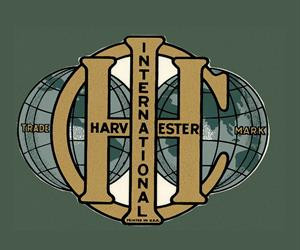
Case IH Logo (1985)

Case IH and Case Construction Logos (used today)

Source: CaseIH.com Notes: All logos are trademarks of Case IH and its former parent companies. The logo timeline above is for informational purposes only.
CNH Industrial
CNH Industrial was formally separated from Fiat in 2013 in a spin-off overseen by CEO Sergio Marchionne and the Agnelli family (from Italy, they are large stakeholders in Fiat and Ferrari). CNH's portfolio included Case IH, Case Construction, New Holland Agriculture, New Holland Construction, Iveco (trucks & bus), FPT Industrial (industrial engines) and the financing arm.
Fiat had become a giant company after it acquired the bankrupt Chrysler Corporation during the Financial Crisis. The CNH Industrial spin-off was meant to simplify the businesses by creating a separate automotive company (Fiat Chrysler Automotive) and a truck and off-highway industrial company (CNH Industrial).
CNH Industrial is a global company with its headquarters in Basildon, UK. It is controlled and mostly owned by the Italian investment company Exor, which in turn is controlled by the Italian Agnelli family. The legal headquarters are in Amsterdam, Netherland.
CNH Industrial has a network of more than 11,500 dealers and distributors in over 170 countries worldwide. Dealers are independent and not owned by CNH Industrial, except for a few dealerships in North America and Europe.
CNH Industrial's current CEO is Scott W. Wine (American) and the company employs more than 63,000 people in 67 manufacturing plants and 56 research and development centers.

Source: CNH Industrial
Notes: CNH Industrial serves multiple end markets (agriculture, construction, trucks, bus and military)
Related: Read more about where New Holland's tractors and combines are made
Multiple Brands, Separate Operations
Despite the fact that CNH Industrial has many different brands under its corporate umbrella, the brands actually operate mostly independently with very low overlap. Most of the manufacturing plants are separate, and not all dealerships carry all brands. For fun, you can compare the CNH Industrial brands visually:
- Case IH dealer location map
- Case Construction dealer location map
- New Holland Ag dealer location map
- New Holland Construction dealer location map
- Steyr dealer location map
Sergio Marchionne did make an effort to achieve cost synergies by pushing for Case, Case IH, and New Holland to use common engines and components sourced from FPT Industrial.
Case IH Factories
Case IH is a global brand with manufacturing locations in North America, South America, Europe, Middle East, and Asia. Case IH's high-horsepower tractors are produced in Fargo, North Dakota (Steiger Series Tractor), Racine Wisconsin (Magnum Series Tractor) and Curitiba, Brazil (Magnum Series and Maxxum Series Tractors). Case IH Axial Flow Combines are produced in Grand Island, Nebraska.
- Grand Island, Nebraska, US - Case IH Axial-Flow Combines, and several types of Hay & Forage equipment including Case IH self-propelled wind rowers
- Fargo, North Dakota, US - Case IH Steiger series 4WD tractors, Case wheel loaders and other agricultural and construction equipment for the global marketplace
- Racine, Wisconsin, US - Case IH Magnum series tractors
- Benson, Minnesota, US - Cotton Harvesters, Application Equipment
- Burlington, Iowa, US
- Goodfield, Illinois - Tillage Equipment
- Saskatoon, Saskatchewan, Canada - Crop Production Equipment
- New Holland, Pennsylvania - Round Balers, Square balers, Pull-type Forage Harvesters, Disc Mower Conditioners and Box Spreaders
- Querétaro, México - Tractors
- Ferreyra, Argentina - Combine harvesters, Puma tractors
- Curitiba, Brazil - Farmall, Maxxum and Magnum Tractors
- Piracicaba, Brazil - Sugarcane harvesters, Sprayers, Coffee harvesters and Planters
- Sorocaba, Brazil - 7230, 8230 and 9230 Combines
- Jesi, Italy - Tractors
- St. Valentin, Austria - Tractors
- Basildon, England - Tractors
- TürkTraktör, Türkiye - Tractors
- CNH Industrial (India) Pvt limited - Tractors and harvesting equipment
- HEPCO, Iran - Sugarcane harvesters
Case IH Tractors
Case IH
Steiger Series

360-620 horsepower
Made in Fargo, North Dakota, US
Case IH
Magnum Series
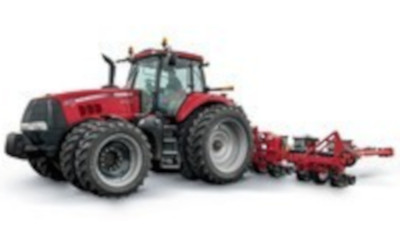
180-380 horsepower
Made in Racine, Wisconsin, US and Curitiba, Brazil
Case IH
Puma Series
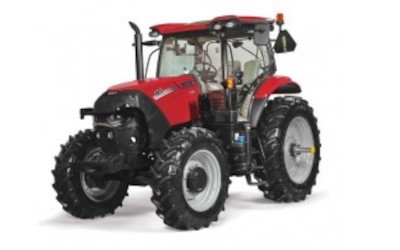
150-240 horsepower
Case IH
Maxxum Series
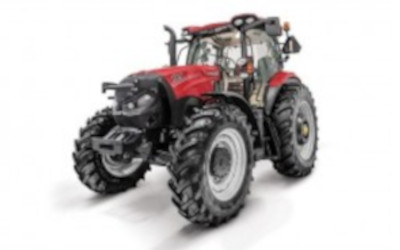
116-145 horsepower
Made in Curitiba, Brazil
Case IH
Vestrum Series

Case IH Farmall
A Series
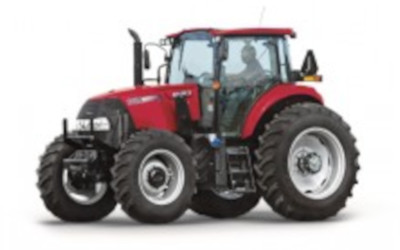
53-140 horsepower
Case IH Farmall
C Series

Case IH Farmall
Utility C Series
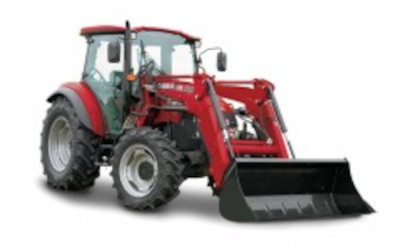
64-117 horsepower
Case IH Farmall
Utility U Series
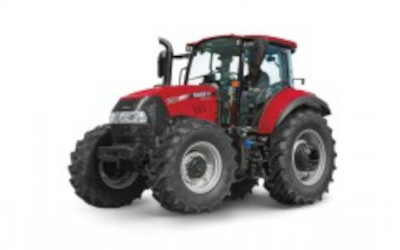
107-117 horsepower
Case IH Farmall
N/V Series

76-106 horsepower
Case IH Farmall
Compact A Series II

35-40 horsepower
Case IH Farmall
Compact C Series
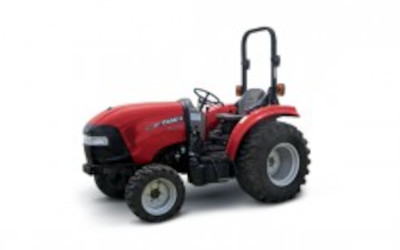
35-55 horsepower
Case IH Combines
Case IH
Axial Flow Combine
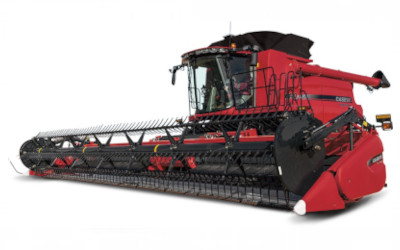
468 horsepower
Made in Grand Island, Nebraska, US



